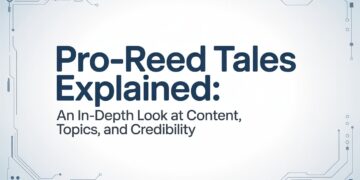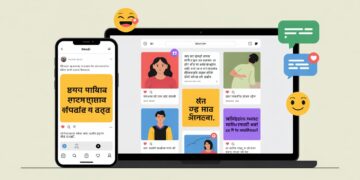Shadow IT
As advanced solutions increase in number in the public cloud, businesses become more vulnerable to attacks and risks that stem from shadow IT. Foregoing the due process for the approval of an IT solution may speed up work, but this entails grave security threats for the organization. Discover how the prevalent use of long-tail apps contributes to the spread of shadow IT and the necessary steps for IT governance to address shadow IT at its root.
What is shadow IT?
Shadow IT is defined as the use of any information technology solution, service, or application without the approval of an organization’s IT department. In essence, Shadow IT refers to any activity involving technical solutions that have not been reviewed from a security and compliance perspective, thus opening gates for data breaches and vulnerabilities.
Shadow IT is most prevalent in the form of cloud-based applications and services. As the working environment continues to transform and more organizations are adopting remote work or hybrid setups, it’s more challenging for the IT department to keep track of approved and unapproved solutions used within the organization.
However helpful such IT solutions may be for employees, shadow IT poses great risks for the data control and cybersecurity of an organization. As challenging as it may be for IT departments to prevent unsanctioned procurement of such services, it’s high time for organizations to revisit their technology management.
What are long-tail apps?
Long-tail applications refer to IT services, applications, and solutions available on the cloud for specific purposes. Most of the time, these applications are designed by enterprises with the sole objective of being productivity aids to the business industry.
Long-tail apps are a significant contributor to the looming threat of shadow IT. 83 percent of employees report they use unapproved business solutions to aid them in accomplishing their tasks. Employees find it irresistible to adopt long-tail apps in their line of work as cloud computing becomes more integrated into today’s daily routine, even outside of work.
Some examples of long-tail apps that you may be familiar with include:
- File-sharing services: Google Drive, OneDrive, DropBox
- Video conferencing platforms: Skype, Zoom, Google Meet
- Appointment setting applications: Calendly, ScheduleOnce
- Collaboration tools: Slack, Igloo, Flock,
- Project management tools: Asana, Trello, ClickUp, BaseCamp
Long-tail applications often provide services that promise to increase productivity and improve communication within a team. They provide some of the latest tools to aid employees in delivering the best results that business-approved solutions lack significantly. However, because of the exponential increase in cloud-based services available, IT departments are falling behind in performing proper compliance tests and giving due approval.
Why do employees seek long-tail apps?
Employees find long-tail apps appealing to use because of their versatility. More often than not, business-approved solutions offer outdated services, while more advanced applications are available on the cloud. Employees prefer to employ new IT solutions to boost their productivity and deliver astounding performance.
Long-tail apps promise quick access to the latest tools in the industry. IT solutions go through a long, bureaucratic process before the IT department can approve them for corporate use. Thus, teams rely on long-tail apps to optimize workflow and speed up the delivery of results.
Finally, employees lack sufficient knowledge of cybersecurity and the threats of long-tail apps to the organization. Many are unaware of which services fall under shadow IT; employees just wish to replace existing business IT solutions with an application they’re comfortable with. As harmless as these services appear on the surface, subtle flaws in security and data privacy can certainly cause bigger problems for the organization.
What are the risks and challenges with long-tail apps?
A corporate IT department or digital security team handles the quality check, data preservation, and approval of technologies that an organization uses or wishes to adopt. They ensure that the digital solution aligns with the company’s objectives and meets security standards. Using long-tail apps exposes the organization and its databases to malicious threats and invasion of privacy.
- Data loss
Business-approved solutions often provide layers of protection over data and databases. Ideally, only authorized accounts are granted permission in accessing critical information. Long-tail apps may provide employees access to sensitive data and risk leaking them online.
- Non-compliance
An organization handles client information carefully, following due process to ensure confidential data is managed lawfully. Without proper evaluation from the IT department, using long-tail apps to access and manage information risks the organization’s reputation. Should anything happen, clients can hold the organization accountable and file lawsuits.
- Network vulnerability
For every login on a long-tail app, employees are risking the organization’s security online. Malicious threats and virus attacks can occur on any device or application accessed through the corporate network. With long-tail apps accessible across a range of devices, the IT department can have trouble mitigating the threats.
- Service malfunction
As with any IT solution, long-tail applications are vulnerable to system crashes and downtime. Unlike business-approved solutions, however, long-tail apps are beyond the IT department’s control. They may be unable to troubleshoot the problem or offer an alternative solution. Such an occurrence impedes a team’s progress and productivity for the duration of the software’s malfunction.
How do you mitigate shadow IT?
The reason behind the existence of shadow IT is due to the disconnect between IT priorities and business users’ needs. This disassociation can easily make room for silos to infiltrate each business unit, allowing them to run their own IT agendas. Long-tail apps may help employees perform better, but the underlying security flaws can cause bigger problems in the future. One best way to eradicate the predicaments of security concerns is no-code low-code development platforms.
A robust LCNC platform:
- Facilitates you with secure building environments to design customizable apps that fit your purpose.
- Empowers IT to not only determine who can build apps but also control access.
- Helps organizations adhere to several industry-specific security protocols and ensures regulatory compliances.
The Future of Long-Tail Apps and Shadow IT
2020 witnessed an increase in the demand for Software as a Service (SaaS). With companies adopting either remote or hybrid work setups, software plays an integral role in maintaining communication and productivity.
The booming SaaS marketplace, however, leaves the IT security teams grappling to comprehend the security, safety, and vulnerabilities of every software available. In 2021, information technology governance missed out on 60 percent of SaaS applications used as shadow IT.
This begs the opportunity for IT management and procurement to innovate in discovering and monitoring shadow IT. Prioritizing business objectives and employee performance in technology selection enables the IT department to adopt business-led IT solutions without risking the safety of the organization.
















